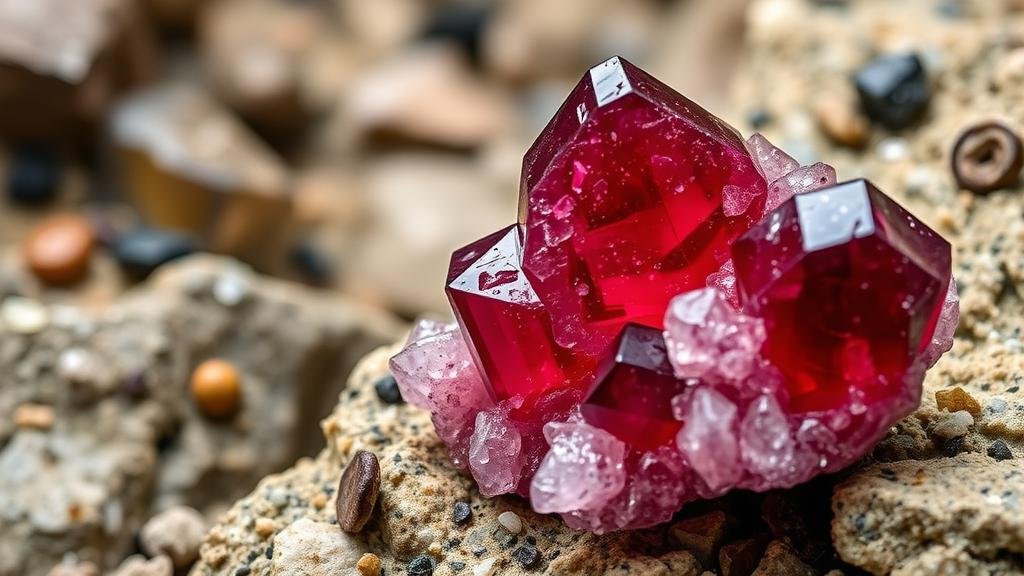Hidden Garnet Mines: Discovering Unique Crystals in Rugged Mountain Passes
Hidden Garnet Mines: Discovering Unique Crystals in Rugged Mountain Passes
For rockhounds and mineral collectors, the thrill of discovery is often as valuable as the specimens themselves. Hidden garnet mines nestled in rugged mountain passes offer a treasure trove of unique crystals waiting to be unearthed. These mines not only provide an opportunity for collectors to find beautiful specimens but also present insights into geological processes and the formation of these remarkable minerals.
The Allure of Garnets
Garnets are a group of silicate minerals that have been used for centuries, both for ornamental purposes and as abrasives. With a chemical formula that is typically represented as A3B2(SiO4)3, garnets encompass a variety of types, including pyrope, almandine, spessartine, grossular, and andradite. The name garnet derives from the Latin word granatum, meaning pomegranate, referring to the fruits red seeds that resemble the stones appearance.
Known for their hardness ranging from 6.5 to 7.5 on the Mohs scale, garnets are durable and can be found in numerous colors, including reddish, orange, green, yellow, and even colorless varieties. This versatility in color and type makes garnets a favored choice among collectors.
Where to Find Hidden Garnet Mines
The search for hidden garnet mines typically leads collectors to some of the most scenic mountainous regions. Some notable areas include:
- The Adirondacks, New York: Renowned for its deep-red garnets, especially pyrope, the Adirondacks offer various collecting sites along riverbanks and old mine areas.
- The Garnet Range, Montana: This region is famous for its large almandine garnets, often found in metamorphic rock formations.
- The Black Hills, South Dakota: Here, you can find a range of garnets amid the beautiful landscapes that feature the famed Mount Rushmore.
These locations not only provide crystal hunting opportunities but also offer the chance to appreciate the surrounding natural beauty, making them perfect destinations for both hobbyists and seasoned mineralogists.
The Science Behind Garnet Formation
Understanding the geological processes involved in garnet formation adds depth to the mineral collecting experience. Garnets typically form in metamorphic rocks under high-pressure and temperature conditions. During this process, minerals like clay and quartz undergo metamorphism, leading to the formation of garnets through a series of chemical reactions.
The growth of garnets occurs over millions of years, contributing to their wide range of colors and sizes. For example, almandine garnets often form in schists, while grossular garnets are found in contact metamorphic environments. Collectors often find weathered garnets in stream beds, where erosion has exposed them.
Practical Tips for Collectors
For those eager to embark on a garnet-hunting adventure, the following tips can enhance the experience:
- Research Locations: Prior to heading out, do thorough research on the areas you plan to visit. Understand legal requirements regarding collecting in certain regions.
- Bring the Right Tools: Equip yourself with basic tools such as a rock hammer, chisel, safety goggles, and a sturdy field guide to identify garnet types.
- Timing Matters: Early summer is often the best time to explore, as spring runoff might have cleared new areas for discovery.
- Join Local Clubs: Consider joining rockhounding or gem clubs in your area. Networking with experienced collectors can yield valuable advice and potential mining opportunities.
Real-World Applications of Garnets
Beyond their aesthetic appeal, garnets have practical applications. Garnet abrasives are widely used in sandpapers and water jet cutting, as their hardness makes them ideal for such purposes. Also, garnets are increasingly being researched for their potential in the field of energy storage, as some varieties display interesting electrochemical properties.
Conclusion: Unearthing Adventure and Knowledge
Hidden garnet mines in mountainous regions offer more than just unique crystals for rockhounds and mineral collectors–they present an opportunity to engage deeply with geology and the natural world. thrill of discovery combined with the practical wisdom of collecting can lead to rewarding experiences and lifelong passion. By equipping yourself with knowledge and the right tools, you may uncover some breathtaking specimens and learn about the intricate processes that form these beautiful minerals.



